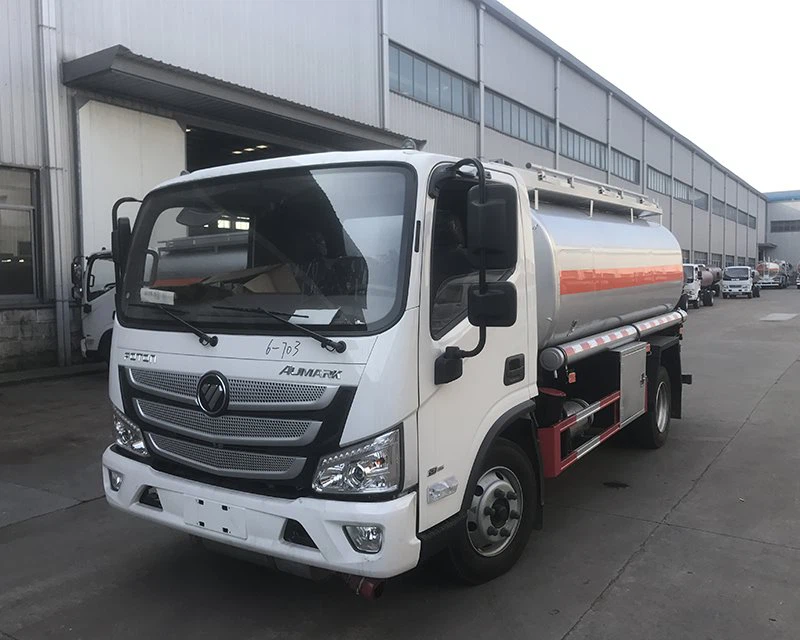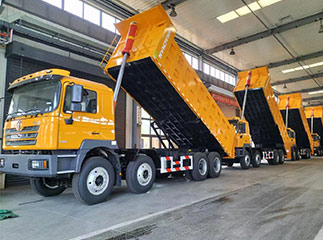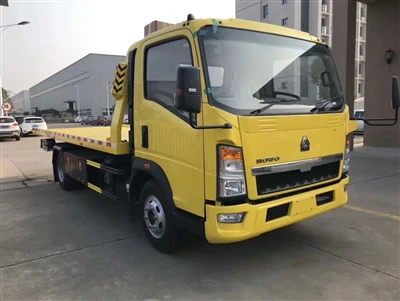Understanding Rear Loaders: A Comprehensive Guide

Introduction
Rear loaders are specialized vehicles used primarily for waste collection and disposal. Designed for efficient operation in urban environments, these trucks have a unique loading mechanism that allows for quick and easy waste collection. This article delves into the details of rear loaders, including their design, working mechanisms, advantages, disadvantages, and practical applications in the waste management sector.
What is a Rear Loader?
A rear loader is a type of refuse truck that loads waste from the back of the vehicle. It typically features a hopper where the waste is collected. The mechanism is designed to facilitate easy loading while minimizing the exposure of the driver to potential hazards. Rear loaders are common in cities for collecting residential and commercial waste due to their efficient design.
Characteristics of Rear Loaders

- Loading Mechanism: Rear loaders utilize a hydraulic system to lift and compact waste into the truck’s body.
- Capacity: They have a varying capacity, often ranging from 10 to 30 cubic yards, depending on the model.
- Design: Most rear loaders are designed to accommodate a single operator, enhancing operational efficiency.
- Waste Types: They are effective in collecting a wide range of waste materials, including solid waste, recyclable materials, and yard debris.
The Components of a Rear Loader
Understanding the components of a rear loader can help to appreciate its functionality and design. Here are the essential parts:
1. Chassis
The chassis serves as the foundational structure of the truck. It is designed to support heavy loads and withstand mechanical stress during waste collection.
2. Compaction System
The compaction system compresses the waste, enabling the rear loader to maximize its load capacity. This system typically consists of a ram that pushes waste towards the back of the truck.
3. Hydraulic System
The hydraulic system powers the compaction mechanism and the loading system. It uses pressurized fluid to move various components, increasing efficiency in collection operations.
4. Hopper
The hopper is the opening at the back of the truck where waste is loaded. It is designed for easy access and to facilitate the loading process.
5. Control System
A rear loader features a control system that allows the driver to manage the loading and compaction functions from the cab conveniently.
The Working Mechanism of a Rear Loader
The working mechanism of a rear loader involves a series of steps for efficient waste collection:
1. Positioning
The rear loader is positioned near the waste collection area, ensuring that it can easily access the waste receptacles.
2. Loading
Operators or automated systems load waste into the hopper using a lifting mechanism. The hydraulic controls assist in lifting heavier bins.
3. Compaction
Once the waste is in the hopper, the compaction system activates, pressing down on the waste to minimize its volume and fit more into the truck.
4. Transport
After collecting and compacting the waste, the rear loader transports it to the disposal or recycling facility.
Advantages of Using a Rear Loader
Rear loaders come with several advantages that make them a preferred choice in waste collection:
1. Increased Efficiency
The design of rear loaders allows for quick loading and compaction, enabling operators to cover more ground in less time.
2. Safety Features
Since operators work from the truck cab, rear loaders offer enhanced safety by reducing exposure to oncoming traffic and hazardous materials.
3. Versatility
Rear loaders can collect various types of waste, including residential garbage, commercial waste, and recyclables, making them highly versatile.
4. Compact Design
The compact design of rear loaders makes them suitable for narrow streets and urban areas with limited access.
Disadvantages of Rear Loaders
While rear loaders have many advantages, they also come with some drawbacks:
1. Limited Volume
Compared to other truck types like side loaders, rear loaders may have a reduced capacity, leading to more trips for collection.
2. Higher Operational Costs
Maintenance and operational costs can be higher due to the complexity of the hydraulic systems involved in their functionality.
Choosing the Right Rear Loader
Selecting the right rear loader involves considering various factors such as:
1. Intended Use
Consider whether the rear loader will primarily be used for residential, commercial, or municipal waste collection.
2. Capacity Requirements
Based on your waste collection volume, choose a rear loader that meets your capacity needs effectively.
3. Budget
Evaluate your budget for both purchasing and maintaining the vehicle over its operational life.
4. Environmental Considerations
Modern rear loaders may offer green technologies, such as alternative fuel options or energy-efficient systems.
Operational Tips for Rear Loaders
To maximize the effectiveness and longevity of rear loaders, operators should consider these practical tips:
1. Regular Maintenance
Carry out regular inspections and maintenance on hydraulic systems and mechanical components to minimize breakdowns.
2. Training for Operators
Ensure that operators are well-trained in the specific functions of the rear loader for safe and efficient operation.
3. Efficient Route Planning
Plan waste collection routes strategically to minimize traveling distances and fuel consumption.
4. Load Optimization
Educate operators on efficient loading techniques to ensure maximum capacity utilization while maintaining safety standards.
Environmental Impact of Rear Loaders
Environmental considerations are crucial in waste management. Rear loaders can positively and negatively impact the environment.
Positive Impacts
- Efficient Waste Collection: By collecting waste efficiently, rear loaders can reduce landfill overflow.
- Promotion of Recycling: Many rear loaders are equipped with separate compartments for recyclables, promoting recycling efforts.
Negative Impacts

- Emissions: Rear loaders typically run on diesel, which can contribute to air pollution.
- Noise Pollution: The operation of these vehicles can contribute to noise pollution, especially in residential areas.
Future Trends in Rear Loader Design and Technology
As technology evolves, the design and efficiency of rear loaders are also changing. Here are some trends to watch:
1. Alternative Fuel Options
The shift towards electric and hybrid systems will likely become more prominent, reducing emissions and fuel costs.
2. Advanced Automation
Increased automation in rear loaders may lead to enhanced safety features and efficiency, reducing the need for manual labor.
3. Smart Technology Integration
GPS tracking and route optimization software will likely be integrated into rear loaders, improving operational efficiency further.
FAQ Section
1. What is the average lifespan of a rear loader?

The average lifespan of a rear loader can range from 10 to 15 years, depending on maintenance and usage conditions.
2. How much do rear loaders cost?
Rear loaders typically range from $100,000 to $300,000, depending on specifications, manufacturer, and additional features.
3. What are the main regulations surrounding waste collection with rear loaders?
Regulations can vary by location, but generally involve compliance with local waste management policies, safety standards, and environmental guidelines.
4. Can rear loaders be used for recycling?
Yes, many rear loaders are equipped to handle recyclables, allowing for efficient collection and separation of waste materials.
5. What kind of maintenance do rear loaders require?
Rear loaders require regular inspections of hydraulic systems, braking systems, and mechanical components to ensure safe and effective operation.
6. Are there rear loaders designed for specific waste types?
Yes, some rear loaders are specifically designed to handle certain types of waste, such as bulky items, yard waste, or hazardous materials.
